-
 Bitcoin
Bitcoin $105,495.4180
-0.21% -
 Ethereum
Ethereum $2,532.9701
-1.05% -
 Tether USDt
Tether USDt $1.0005
0.01% -
 XRP
XRP $2.1427
0.09% -
 BNB
BNB $644.0034
-1.52% -
 Solana
Solana $144.7535
-1.76% -
 USDC
USDC $0.9999
0.01% -
 Dogecoin
Dogecoin $0.1782
-0.48% -
 TRON
TRON $0.2709
-0.07% -
 Cardano
Cardano $0.6254
-2.05% -
 Hyperliquid
Hyperliquid $40.1521
-5.43% -
 Sui
Sui $2.9303
-4.30% -
 Chainlink
Chainlink $13.1995
-0.78% -
 Bitcoin Cash
Bitcoin Cash $433.3943
-1.08% -
 UNUS SED LEO
UNUS SED LEO $9.0813
1.24% -
 Avalanche
Avalanche $19.0345
-1.30% -
 Stellar
Stellar $0.2565
-1.39% -
 Toncoin
Toncoin $2.9571
-1.79% -
 Shiba Inu
Shiba Inu $0.0...01208
0.26% -
 Hedera
Hedera $0.1551
-1.85% -
 Litecoin
Litecoin $85.3588
-0.43% -
 Polkadot
Polkadot $3.7914
-0.78% -
 Ethena USDe
Ethena USDe $1.0004
0.00% -
 Monero
Monero $311.9380
0.64% -
 Dai
Dai $0.9999
0.02% -
 Bitget Token
Bitget Token $4.5248
0.11% -
 Pepe
Pepe $0.0...01097
-1.27% -
 Uniswap
Uniswap $7.2924
-2.89% -
 Pi
Pi $0.6092
5.31% -
 Aave
Aave $278.0189
-2.37%
What is the difference between the mark price and the latest price of Bybit contracts? Which one should be used when trading?
The mark price on Bybit helps prevent unnecessary liquidations by reflecting true market value, while the latest price is key for real-time trading decisions.
May 03, 2025 at 11:22 pm
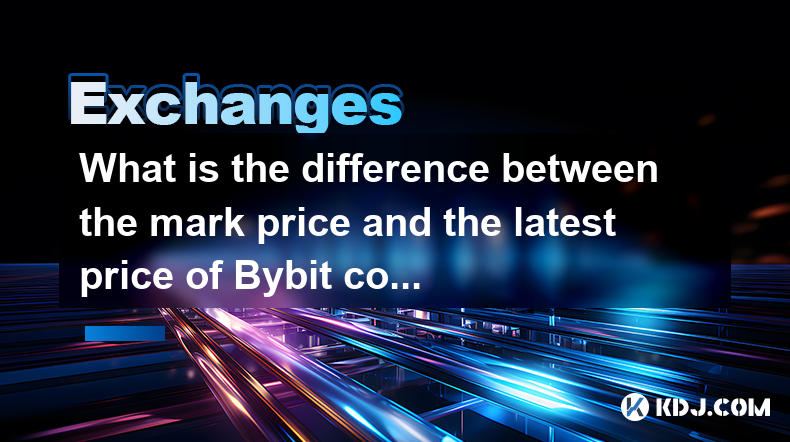
Understanding the difference between the mark price and the latest price of Bybit contracts is crucial for any trader looking to navigate the cryptocurrency derivatives market effectively. Both prices serve distinct purposes and are used in different contexts within trading. In this article, we will explore these differences in detail and discuss which price traders should focus on when making trading decisions.
What is the Mark Price?
The mark price is a critical component in Bybit's risk management system designed to prevent unnecessary liquidations. It is a calculated price that aims to reflect the true market value of a contract more accurately than the latest price. Bybit calculates the mark price using a combination of the latest price and the fair price, which is derived from the spot price and the funding rate. The formula for the mark price is as follows:
[ \text{Mark Price} = \text{Index Price} \times (1 + \text{Funding Rate} \times \text{Time to Funding}) ]
The index price is typically an average of prices from multiple spot exchanges, which helps to smooth out any anomalies or manipulation in the market. The funding rate is a mechanism to ensure that the perpetual contract's price stays aligned with the spot price, and the time to funding refers to the time remaining until the next funding settlement.
What is the Latest Price?
The latest price, on the other hand, is the most recent trading price of the Bybit contract. It reflects the current market sentiment and is influenced by the immediate supply and demand dynamics on the exchange. This price is what traders see in real-time on the trading platform and is used for executing trades.
Why is the Mark Price Used?
The mark price is primarily used for calculating the unrealized profit and loss (PnL) of open positions and for determining whether a position should be liquidated. By using the mark price, Bybit ensures that liquidations are based on a more stable and fair value, reducing the risk of cascading liquidations caused by temporary market volatility or manipulation.
Why is the Latest Price Used?
The latest price is essential for traders who need to make quick decisions based on the current market conditions. It is the price at which traders can enter or exit positions immediately. However, relying solely on the latest price for decision-making can be risky, as it may not always reflect the true market value and can be subject to sudden spikes or drops.
Which Price Should Be Used When Trading?
When it comes to trading, understanding the context in which each price is used is crucial. Here are some guidelines on when to use each price:
For Making Trading Decisions: Traders should primarily use the latest price to monitor market trends and make entry or exit decisions. It provides real-time information that is essential for reacting to market movements quickly.
For Risk Management: The mark price is the key metric to monitor for managing risk. It helps traders understand their true unrealized PnL and assess the risk of liquidation. By focusing on the mark price, traders can make more informed decisions about position sizing and stop-loss levels.
For Long-Term Position Monitoring: For those holding positions over longer periods, the mark price is more relevant. It provides a more stable reference point for evaluating the performance of a position and planning future trades.
For Understanding Market Health: The mark price can also give traders insights into the overall health of the market. A significant deviation between the mark price and the latest price may indicate market stress or potential manipulation.
Practical Application in Trading
To illustrate the practical application of these prices, let's consider a scenario where a trader is monitoring a Bybit BTCUSD perpetual contract:
Monitoring the Latest Price: The trader observes that the latest price of the BTCUSD contract is $30,000. They decide to enter a long position at this price, expecting the market to rise.
Checking the Mark Price: Before entering the trade, the trader checks the mark price, which is $29,950. This indicates that the market's true value might be slightly lower than the latest price, suggesting a potential risk of a price correction.
Setting Stop-Loss: Based on the mark price, the trader sets a stop-loss order at $29,500 to manage risk effectively. This stop-loss is based on the mark price to avoid unnecessary liquidations.
Monitoring Unrealized PnL: As the trader holds the position, they monitor the unrealized PnL based on the mark price. If the mark price moves to $30,500, the trader's unrealized profit increases, even if the latest price shows more volatility.
Exiting the Position: When the trader decides to exit the position, they do so at the latest price, which might be $30,600 at that moment. The realized profit is then calculated based on the entry and exit prices.
Frequently Asked Questions
Q: Can the mark price and the latest price ever be the same?
A: Yes, the mark price and the latest price can be the same under certain market conditions, particularly when the market is stable and there is no significant deviation between the spot price and the perpetual contract price. However, due to the inclusion of the funding rate in the mark price calculation, they are often slightly different.
Q: How often is the mark price updated?
A: The mark price is updated in real-time, similar to the latest price. Bybit's system continuously calculates the mark price to ensure it reflects the most current market conditions.
Q: Does the mark price affect the funding rate?
A: The mark price itself does not directly affect the funding rate. However, the funding rate is a component in the calculation of the mark price. The funding rate is determined by the difference between the perpetual contract price and the spot price, and it is used to align the two prices over time.
Q: Can I trade based solely on the mark price?
A: While the mark price is crucial for risk management and understanding the true market value, trading decisions should not be based solely on the mark price. The latest price is necessary for executing trades and reacting to immediate market movements. A balanced approach that considers both prices is recommended for effective trading.
Disclaimer:info@kdj.com
The information provided is not trading advice. kdj.com does not assume any responsibility for any investments made based on the information provided in this article. Cryptocurrencies are highly volatile and it is highly recommended that you invest with caution after thorough research!
If you believe that the content used on this website infringes your copyright, please contact us immediately (info@kdj.com) and we will delete it promptly.
- Explore the Best Upcoming Crypto Presales
- 2025-06-15 05:55:13
- Diverging Trends in the Precious Metals Market
- 2025-06-15 05:55:13
- Maelstrom CIO Arthur Hayes Predicts Bitcoin Price Will Reach $1 Million by 2028
- 2025-06-15 05:50:13
- XYZVerse ($XYZ) has brought a brand-new concept to the memecoin niche by blending the excitement of sports with the fast-moving energy of crypto.
- 2025-06-15 05:50:13
- Bitcoin (BTC) Price Action Is Trapped Within a Tight Trading Channel
- 2025-06-15 05:45:13
- The entire cryptocurrency market is bracing for a major move after Bitcoin recently reached the crucial $95,000 mark before declining to the $90000 level.
- 2025-06-15 05:45:13
Related knowledge
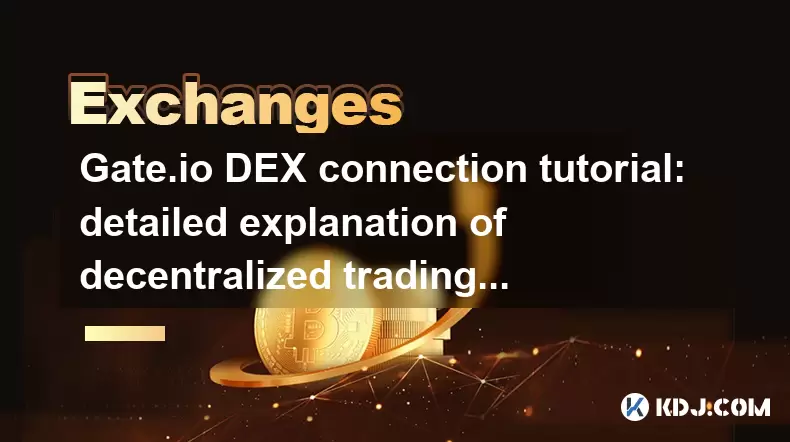
Gate.io DEX connection tutorial: detailed explanation of decentralized trading operation steps
Jun 12,2025 at 08:04pm
Connecting to Gate.io DEX: Understanding the BasicsBefore diving into the operational steps, it is crucial to understand what Gate.io DEX is and how it differs from centralized exchanges. Unlike traditional platforms where a central authority manages user funds and trades, Gate.io DEX operates on blockchain technology, allowing users to trade directly f...
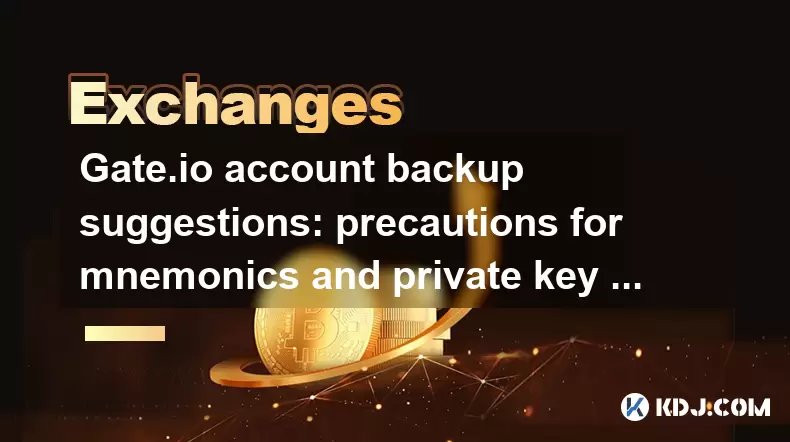
Gate.io account backup suggestions: precautions for mnemonics and private key storage
Jun 12,2025 at 10:56am
Understanding the Importance of Mnemonics and Private KeysIn the world of cryptocurrency, mnemonics and private keys are the core elements that grant users ownership over their digital assets. When using Gate.io or any other crypto exchange, understanding how to securely manage these components is crucial. A mnemonic phrase typically consists of 12 or 2...
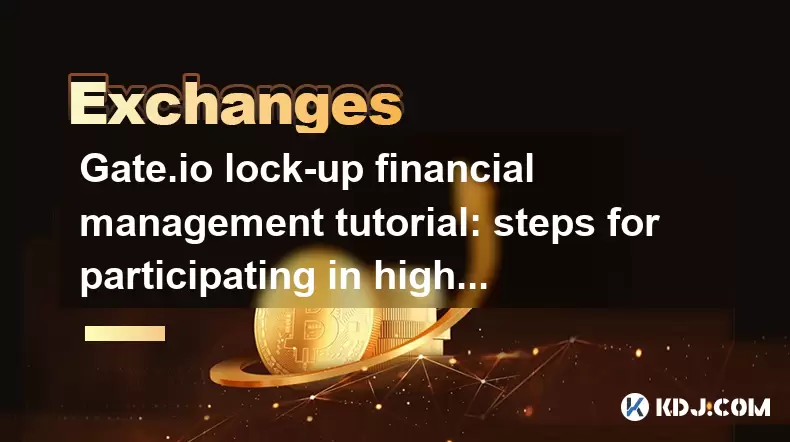
Gate.io lock-up financial management tutorial: steps for participating in high-yield projects and redemption
Jun 13,2025 at 12:43am
What Is Gate.io Lock-Up Financial Management?Gate.io is one of the world’s leading cryptocurrency exchanges, offering users a variety of financial products. Lock-up financial management refers to a type of investment product where users deposit their digital assets for a fixed period in exchange for interest or yield. These products are designed to prov...
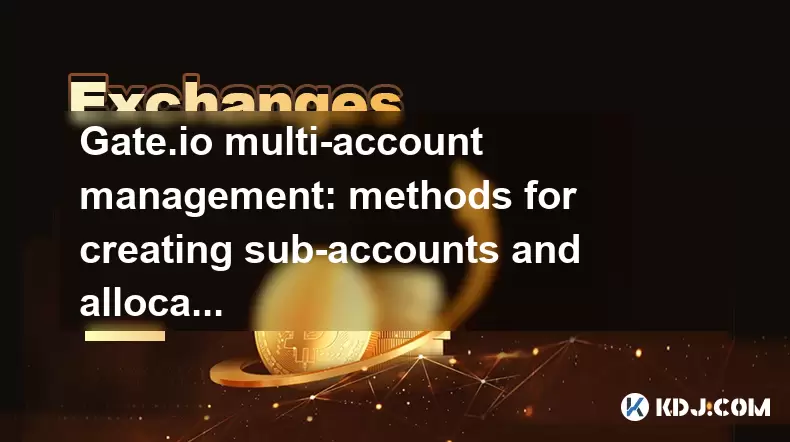
Gate.io multi-account management: methods for creating sub-accounts and allocating permissions
Jun 15,2025 at 03:42am
Creating Sub-Accounts on Gate.ioGate.io provides users with a robust multi-account management system that allows for the creation of sub-accounts under a main account. This feature is particularly useful for traders managing multiple portfolios or teams handling shared funds. To create a sub-account, log in to your Gate.io account and navigate to the 'S...
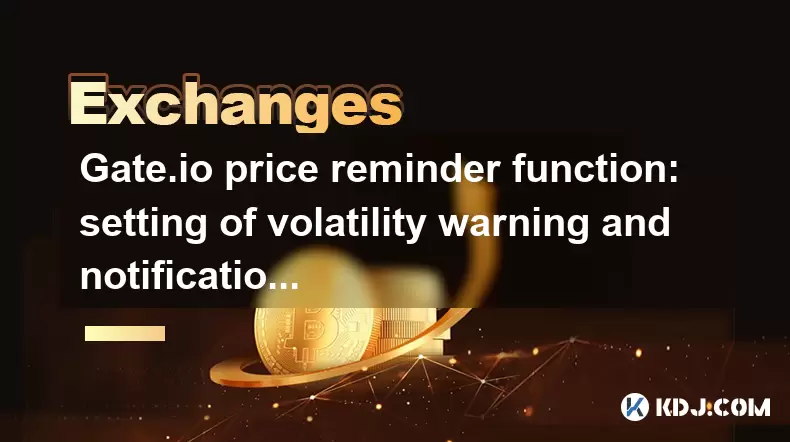
Gate.io price reminder function: setting of volatility warning and notification method
Jun 14,2025 at 06:35pm
What is the Gate.io Price Reminder Function?The Gate.io price reminder function allows users to set up custom price alerts for specific cryptocurrencies. This feature enables traders and investors to stay informed about significant price changes without constantly monitoring market data. Whether you're tracking a potential buy or sell opportunity, the p...
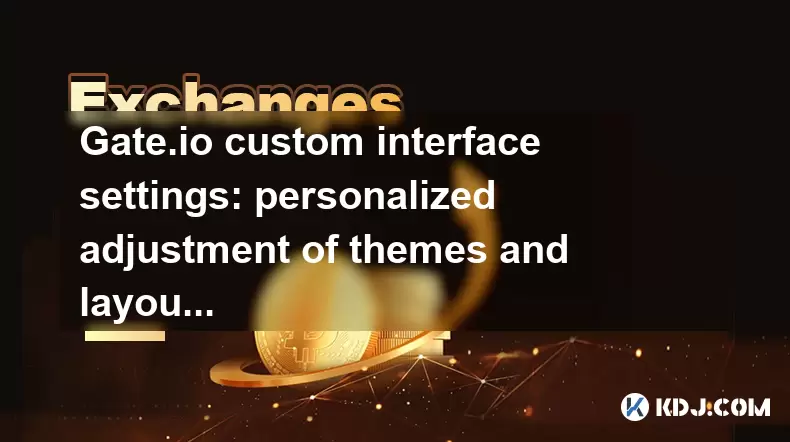
Gate.io custom interface settings: personalized adjustment of themes and layouts
Jun 13,2025 at 03:22am
Introduction to Gate.io Interface CustomizationGate.io is one of the leading cryptocurrency exchanges in the world, offering users a wide range of trading tools and features. Among these, custom interface settings play a crucial role in enhancing user experience by allowing traders to personalize their dashboard according to individual preferences. Whet...

Gate.io DEX connection tutorial: detailed explanation of decentralized trading operation steps
Jun 12,2025 at 08:04pm
Connecting to Gate.io DEX: Understanding the BasicsBefore diving into the operational steps, it is crucial to understand what Gate.io DEX is and how it differs from centralized exchanges. Unlike traditional platforms where a central authority manages user funds and trades, Gate.io DEX operates on blockchain technology, allowing users to trade directly f...

Gate.io account backup suggestions: precautions for mnemonics and private key storage
Jun 12,2025 at 10:56am
Understanding the Importance of Mnemonics and Private KeysIn the world of cryptocurrency, mnemonics and private keys are the core elements that grant users ownership over their digital assets. When using Gate.io or any other crypto exchange, understanding how to securely manage these components is crucial. A mnemonic phrase typically consists of 12 or 2...

Gate.io lock-up financial management tutorial: steps for participating in high-yield projects and redemption
Jun 13,2025 at 12:43am
What Is Gate.io Lock-Up Financial Management?Gate.io is one of the world’s leading cryptocurrency exchanges, offering users a variety of financial products. Lock-up financial management refers to a type of investment product where users deposit their digital assets for a fixed period in exchange for interest or yield. These products are designed to prov...

Gate.io multi-account management: methods for creating sub-accounts and allocating permissions
Jun 15,2025 at 03:42am
Creating Sub-Accounts on Gate.ioGate.io provides users with a robust multi-account management system that allows for the creation of sub-accounts under a main account. This feature is particularly useful for traders managing multiple portfolios or teams handling shared funds. To create a sub-account, log in to your Gate.io account and navigate to the 'S...

Gate.io price reminder function: setting of volatility warning and notification method
Jun 14,2025 at 06:35pm
What is the Gate.io Price Reminder Function?The Gate.io price reminder function allows users to set up custom price alerts for specific cryptocurrencies. This feature enables traders and investors to stay informed about significant price changes without constantly monitoring market data. Whether you're tracking a potential buy or sell opportunity, the p...

Gate.io custom interface settings: personalized adjustment of themes and layouts
Jun 13,2025 at 03:22am
Introduction to Gate.io Interface CustomizationGate.io is one of the leading cryptocurrency exchanges in the world, offering users a wide range of trading tools and features. Among these, custom interface settings play a crucial role in enhancing user experience by allowing traders to personalize their dashboard according to individual preferences. Whet...
See all articles

























































































